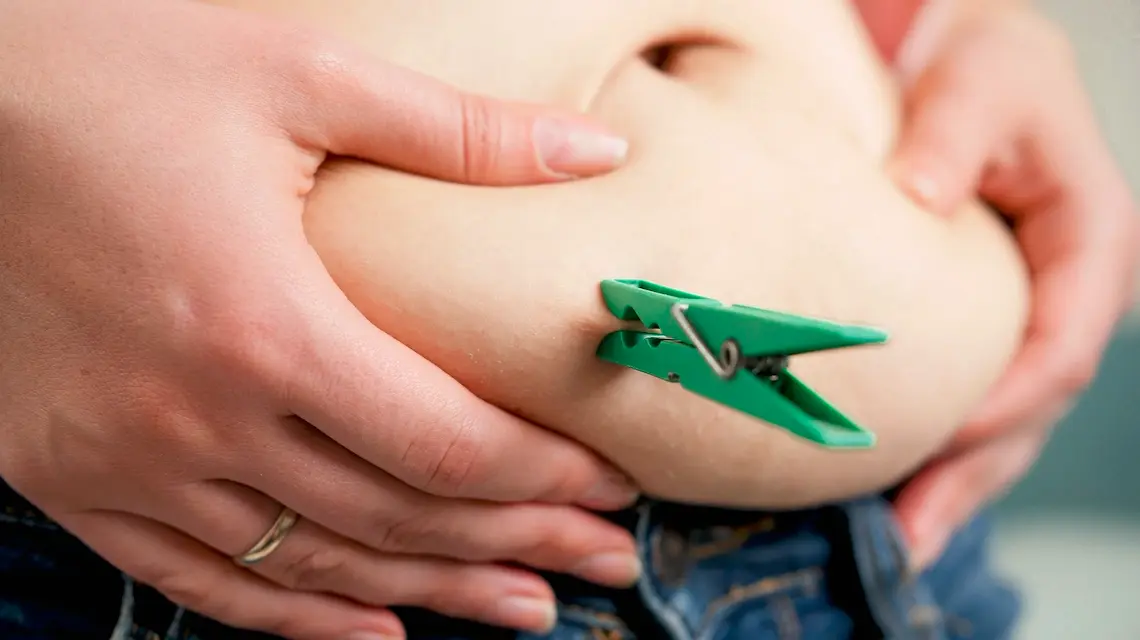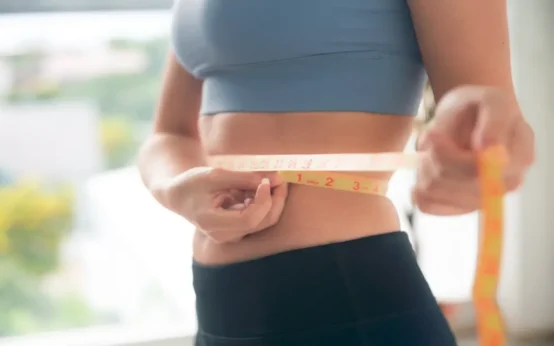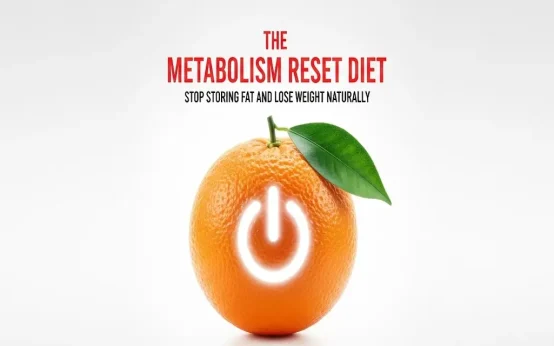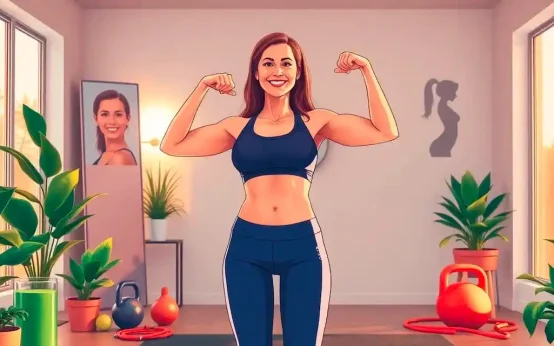Tired of tight jeans and the little fold that shows up in leggings? You are not alone. If you want to know how to get rid of lower tummy pooch, the answer is not one magic move or a detox. It is a mix of food, smart core training, and a few daily habits. That combo trims body fat, firms the deep core, and reduces bloat so your lower belly looks flatter.
There is one myth to clear up first. You cannot spot reduce fat from the lower belly. You can lose overall fat while building core strength and easing bloat, and that changes how your midsection looks. Can see visible change in 4 to 12 weeks if you are steady with the plan. New parents, healing from birth or dealing with diastasis recti can change the approach, so go gentle and adjust where needed.
This guide gives you a clear path that fits real life. You will get simple food targets, safe core moves that actually work, and lifestyle fixes that help your midsection look calm, not puffy. Ready to feel your waistband loosen without extreme rules?
Why You Have a Lower Tummy Pooch (Find Your Main Cause)
Before you start, it helps to know what you are dealing with. A lower belly pooch can come from a few different things. For most people, it is a mix of extra body fat, weak deep core and posture habits, changes from pregnancy or scars, and bloat or hormones.
When you know your main cause, you can focus on the part of the plan that gives the biggest wins. Here is how to spot your top driver with quick self checks you can do at home.
Extra body fat and genetics: why the lower belly holds on
Fat loss happens across the whole body. The lower belly is often one of the last places to lean out. Age, sex, and genetics play a big role in where you store fat and where you lose it first.
Quick check: stand relaxed and try to pinch the lower belly. If you can grab more than an inch, fat loss will help most. You will still train your core, but the food and activity plan will move the needle fastest.
Weak deep core and posture: the slump that makes the belly pop
Your transverse abdominis, or TVA, is a deep muscle that works like a natural corset. When it is sleepy, or when your pelvis tips forward and your ribs flare, your belly can look like it pushes out even at the same body fat.
Quick check: stand side view in a mirror. Do you see a big low back arch and your lower ribs pointing up? If yes, deep core training and posture cues will flatten your profile. You will learn to brace, stack ribs over pelvis, and keep tension where you need it.
Diastasis recti or C-section scars: a quick at-home check
Pregnancy, weight changes, or surgery can affect midline tension. A gentle self test can help you decide if you should start with rehab-style moves.
Lie on your back with knees bent. Place fingers at the midline above and below the belly button. Lift your head slightly like you are doing a small crunch. Feel for a gap or any doming in the midline. If the gap is wider than two fingers or you see bulging, focus on slow, controlled core work that builds tension. If you have a C-section scar, know that scar tissue can feel tight and limit how well you load the core. Gentle mobility and massage can help. A pelvic floor specialist is a smart next step if you are unsure.
Bloating and hormones: when it is not fat
Sometimes the pooch is not fat at all. It is gas, water shifts, or digestion stress. Common bloat triggers include salty meals, carbonated drinks, alcohol, low fiber, some high FODMAP foods, and stress. Many people also see waist changes across the menstrual cycle.
Quick check: does your waist change by more than 1 inch across the week? If yes, anti-bloat habits will help a lot. Think hydration, steady meals, fiber, and watching salt and alcohol.
Eat This Way to Get Rid of Lower Tummy Pooch Without Starving
You do not need a harsh diet. You need a small calorie deficit, higher protein, enough fiber, and smart choices with carbs and fats. Add anti-bloat habits like hydration, lower sodium, and steady meals. You will feel better, not deprived.
Set your calorie target and protein goal
Most people do well with a modest deficit of 300 to 500 calories per day. That is enough to lose about 0.5 to 1 pound per week without constant hunger.
Protein helps you stay full and hang on to muscle while you lose fat. A simple target is 0.7 to 1.0 grams per pound of your goal body weight per day, split across your meals.
- Example: if your goal weight is 150 pounds, aim for 105 to 150 grams of protein per day.
- Split across three meals and two snacks, that might look like 30 to 35 grams per meal and 10 to 20 grams per snack.
Do not chase perfect math. Pick a realistic number, then aim to hit it most days.
Build your plate: simple meal ideas for lower belly fat loss
Use the 50/25/25 plate. Fill half your plate with veggies or fruit, one quarter with lean protein, and one quarter with smart carbs like rice, potatoes, oats, or beans. Add healthy fats in small amounts, like a spoon of olive oil or a sprinkle of nuts.
Sample day:
- Breakfast: Greek yogurt bowl with berries, chia, and a handful of high-fiber cereal.
- Snack: Apple and a cheese stick.
- Lunch: Big salad with chicken, chickpeas, mixed greens, cucumbers, tomatoes, olive oil, and vinegar, plus a slice of whole grain bread.
- Snack: Protein shake and a kiwi.
- Dinner: Salmon, roasted potatoes, and a tray of mixed roasted veggies. Yogurt sauce on the side.
This pattern controls calories without counting every crumb.
Beat bloat with fiber, sodium, and water
Fiber pulls water into the gut, supports regularity, and feeds good bacteria. Aim for 25 to 35 grams per day, and add it slowly to avoid gas. Hydrate with 2 to 3 liters of water per day, more if you are active or live in heat. Keep sodium under 2,300 mg per day unless your doctor says otherwise.
Helpful foods for bloat control:
- Yogurt or kefir with live cultures
- Berries and kiwi
- Ginger and peppermint tea
- Oats, chia, and psyllium
Try steady meal timing too. Long gaps can lead to big, salty dinners that puff your midsection by morning.
Smart swaps and habits that stick
Small changes add up fast.
- Swap soda for sparkling water with lemon or lime.
- Trade chips for air-popped popcorn.
- Use salsa, mustard, or yogurt in place of creamy sauces.
- Replace sugary coffee drinks with coffee plus milk and cinnamon.
- Plan protein first at each meal.
- Keep fruit where you can see it.
- Limit alcohol to 0 to 2 drinks per week. Alcohol disrupts sleep, adds calories, and can make you hold water.
Consistency beats perfection. If you go off plan at one meal, reset at the next one.
Workouts That Flatten the Lower Belly Safely
A flat-looking lower belly starts with deep core activation. Then you layer on strength training and enough movement to burn calories. The goal is stable, strong, and lean, not endless crunches that hurt your back.
Learn to brace: breathing, pelvic tilt, and TVA
Start with 360 breathing. Lie on your back with knees bent and one hand on your belly, the other on your ribs.
- Inhale through your nose and fill your ribs and belly like a balloon.
- Exhale through pursed lips, draw your belly gently in like zipping up tight jeans, and bring ribs down. Add a small posterior pelvic tilt, which means flatten your low back toward the floor.
Practice 5 sets of 5 breaths daily. This teaches your TVA to turn on and hold tension without gripping your neck or glutes.
Best lower ab exercises that actually work
Use slow, controlled reps and avoid doming in the midline. If you see bulging, scale the move.
- Heel slides
- Dead bug
- Marching bridge
- Bird dog
- Side plank
- Reverse crunch with pelvic tilt
- Suitcase carry
Do 2 to 3 sets of 8 to 12 reps for each move, resting 45 to 60 seconds. Rotate 4 to 6 of these moves for a simple 15 minute routine. Keep your breath smooth and your ribs down.
Example 15 minute lower core routine:
- 5 breaths of 360 breathing with pelvic tilt
- Dead bug, 2 sets of 10 per side
- Heel slides, 2 sets of 10 per side
- Side plank, 2 sets of 20 to 40 seconds per side
- Reverse crunch with pelvic tilt, 2 sets of 8 to 12
- Suitcase carry, 2 trips of 30 to 60 seconds per side
Avoid aggressive sit-ups or bicycle crunches if you have doming, back pain, or a midline gap.
Strength training, steps, and everyday movement
Full body lifting builds muscle that raises calorie burn and shapes your waistline. Do 2 to 3 sessions per week with squats, hinges, pushes, pulls, and carries. Keep the focus on good form and steady progress.
Daily movement matters too. Aim for 8,000 to 12,000 steps on most days. More steps raise your daily burn without beating up your body. Walk after meals when you can. It helps digestion and blood sugar, which also helps with bloat.
Cardio and HIIT: how much is enough
Do 2 to 3 cardio sessions per week, 20 to 30 minutes at an easy to moderate pace. Choose something you like, such as brisk walking, cycling, swimming, or a light jog.
If you enjoy intensity, add 1 short HIIT session per week. A simple setup: 8 rounds of 20 seconds fast, 40 seconds easy. Keep your effort hard but safe, and give yourself time to recover. More is not always better if it spikes stress and cuts into sleep.
Lifestyle Fixes That Shrink Your Lower Tummy Pooch
Your habits outside the gym change how your belly looks. Sleep, stress, posture, and gut health affect your waistline just as much as workouts. Small tweaks create a big shift over a month.
Sleep and stress control to lower cortisol
Aim for 7 to 9 hours of sleep. Good sleep keeps hunger hormones steady and helps you recover from training.
Simple sleep tips:
- A set bedtime and wake time
- A dark, cool room
- No screens 60 minutes before bed
- A short wind-down, like reading or stretching
Keep stress in check with short tools you can actually use:
- 5 minute walks between tasks
- 4-7-8 breathing for a few cycles
- A brief journal brain dump
- A short break outside in daylight
Less stress often means less water retention and a calmer gut.
Posture, standing, and sitting tips
Posture can make a big visual difference in minutes. Think ribs stacked over pelvis, soft knees, chin level, and abs gently braced.
When sitting, keep feet flat, hips slightly above knees, and your back supported. Set a timer and do a 1 minute posture reset every hour. Stand tall, reach your arms overhead, take 3 deep breaths, then resume work.
Gut health, bloating triggers, and simple supplements
Run a 2 week bloat audit. Track what you eat, salt intake, alcohol, your stress level, and how your belly feels. See what patterns show up.
Helpful add-ons:
- Peppermint or ginger tea after meals
- Yogurt or kefir with live cultures, if you tolerate dairy
- Psyllium fiber, 3 to 5 grams with a full glass of water, once per day
If you are unsure about supplements or have a medical condition, talk to a healthcare pro first.
When to see a pro: red flags to check
Get help if you notice a painful bulge, signs of a hernia, a diastasis that does not improve, sharp back pain, or sudden bloating with pain. A doctor or pelvic floor therapist can guide you safely and speed your results.
Conclusion
The big picture is simple. Steady fat loss, deep core training, and anti-bloat habits make the lower belly look flatter. You do not need perfection, you need repeatable steps.
Here is a fast 4 week checklist:
- Set your calories and protein.
- Do the 15 minute core routine 4 days a week.
- Lift full body 2 to 3 days.
- Hit 8k to 12k steps most days.
- Sleep 7 to 9 hours.
- Track fiber, water, and sodium.
- Do a weekly waist measurement and one progress photo.
Expect about 0.5 to 1 pound lost per week, and 0.25 to 0.5 inch off your waist every two weeks. Start today, adjust as needed, and keep going. If you want to know how to get rid of lower tummy pooch, this is the path. Thanks for reading, and share your first small win in the comments.
Related post: Walking to Reduce Belly Fat
How to Get Rid of Lower Tummy Pooch FAQs:
Can I spot-reduce fat from my lower belly?
No. Your body loses fat systemically, not from one area. A calorie deficit, strength training, and consistent habits reduce overall body fat, then the lower belly follows.
What actually causes a lower tummy pooch?
Common causes include extra body fat, bloating, poor posture, weak deep core, diastasis recti, hormone shifts, and fluid retention. Sometimes it is a mix of several.
How do I know if it’s fat or bloating?
Fat feels soft and stays put. Bloating fluctuates during the day, feels tight, and often improves after passing gas or using the bathroom. Track waist changes in the morning for a week.
What works fastest to reduce it?
Create a moderate calorie deficit, lift weights 3 to 4 days a week, walk daily, and hit protein and fiber targets. Sleep 7 to 9 hours and manage stress. Consistency beats intensity.
What’s a realistic timeline to see results?
Small changes show in 2 to 4 weeks, clearer shape in 8 to 12 weeks. The last bit of lower belly fat can take longer. Genetics, starting point, and adherence matter.
How much should I eat to lose lower belly fat?
Aim for a small deficit, about 300 to 500 calories per day. Eat 0.7 to 1.0 grams of protein per pound of goal body weight. Fill the rest with whole carbs and healthy fats.
Which exercises help the lower abs most?
Train your whole core, not just crunches. Try dead bug, reverse crunch, hanging knee raise, plank, and side plank. Pair this with compound lifts like squats, deadlifts, and rows.
Do I need cardio or just strength training?
Both help. Strength training preserves muscle and raises daily energy use. Cardio burns calories and supports heart health. Mix steady walks with short intervals 1 to 2 times per week.
Could my posture make my lower belly stick out?
Yes. Anterior pelvic tilt and tight hip flexors push the belly forward. Strengthen glutes and deep core, and stretch hip flexors and lower back. Check your workstation setup.
How do hormones affect lower belly fat?
High stress (cortisol), poor sleep, and cycle shifts can raise water retention and cravings. Menopause can change fat distribution. Focus on protein, strength training, sleep, and steps.
I recently had a baby. Is my pooch normal?
Often, yes. Diastasis recti and pelvic floor weakness are common. Start with breathwork, pelvic floor activation, and gentle core work. Get clearance from your provider before harder training.
What is diastasis recti and how do I check it?
It is a separation of the abdominal wall. Lie on your back, knees bent, and lift your head slightly. Feel above and below your navel for a gap or bulge. A pelvic health PT can assess and guide you.
Are “fat burner” supplements worth it?
No. Most have tiny effects or side effects. Caffeine can aid training, but fat loss still comes from a calorie deficit, protein, fiber, sleep, and movement.
Do waist trainers flatten the lower belly?
They compress temporarily. They do not burn fat or strengthen your core. Long use can restrict breathing and reduce deep core engagement.
How do I reduce daily bloating that mimics a pooch?
Eat slower, avoid large late-night meals, and test common triggers (beans, onions, carbonated drinks, high-fat meals). Try smaller, balanced meals. If persistent, speak with a clinician.
What role does fiber and hydration play?
Aim for 25 to 35 grams of fiber per day and drink enough water so urine is pale yellow. Fiber supports fullness and gut health. Increase fiber gradually to avoid gas.
Does alcohol affect lower belly fat?
Yes. Alcohol adds calories, lowers inhibitions, and can increase belly fat gain. If you drink, set a weekly limit and choose lower-calorie options. Keep it mindful.
How do I track progress without obsessing over the scale?
Use a tape measure at the navel and 1 inch below, morning photos, and how clothes fit. Track gym performance and daily steps. Review trends every two weeks.
Why did I plateau after early progress?
Your body adapts. Adjust calories slightly, increase steps, add a training set, and tighten sleep and protein. Recheck your logging accuracy.
Is HIIT necessary for lower belly fat loss?
No. It is optional. HIIT saves time but can be taxing. If it hurts recovery or sleep, prioritize walks and strength training.
Can I fix the pooch without a gym?
Yes. Use bodyweight strength circuits (squats, lunges, pushups, planks), resistance bands, and brisk walking. Progress by adding reps, sets, or time.
What if I’ve tried everything and it won’t budge?
Get labs checked for thyroid, iron, and B12 if energy is low. Consider PCOS screening if cycles are irregular. A registered dietitian or coach can spot gaps in plan or tracking.
Do cosmetic options like liposuction or CoolSculpting help?
They can change shape but do not improve health or habits. Results vary and carry risks and cost. Lifestyle changes still matter to maintain results.
Any simple daily plan I can start today?
- Walk 8,000 to 12,000 steps.
- Lift 3 days per week, full body.
- Core finisher 3 times per week (8 to 12 minutes).
- Eat protein at each meal, include produce and fiber.
- Sleep 7 to 9 hours, keep a consistent bedtime.
- Limit alcohol and high-sodium takeout.
Looking for more detail on any section? Ask about sample workouts, a 7-day meal outline, or a core routine you can do at home.




 How to Start a Weight Loss Program
How to Start a Weight Loss Program  What Vitamin Deficiency Makes It Hard to Lose Weight?
What Vitamin Deficiency Makes It Hard to Lose Weight?  Improve Fat Burning With a Metabolism Reset Diet
Improve Fat Burning With a Metabolism Reset Diet  How to Avoid Loose Skin When Losing Weight
How to Avoid Loose Skin When Losing Weight  Good Eating Habits for Weight Loss
Good Eating Habits for Weight Loss  A Guide to Weight Loss for Busy People in Today’s Society
A Guide to Weight Loss for Busy People in Today’s Society